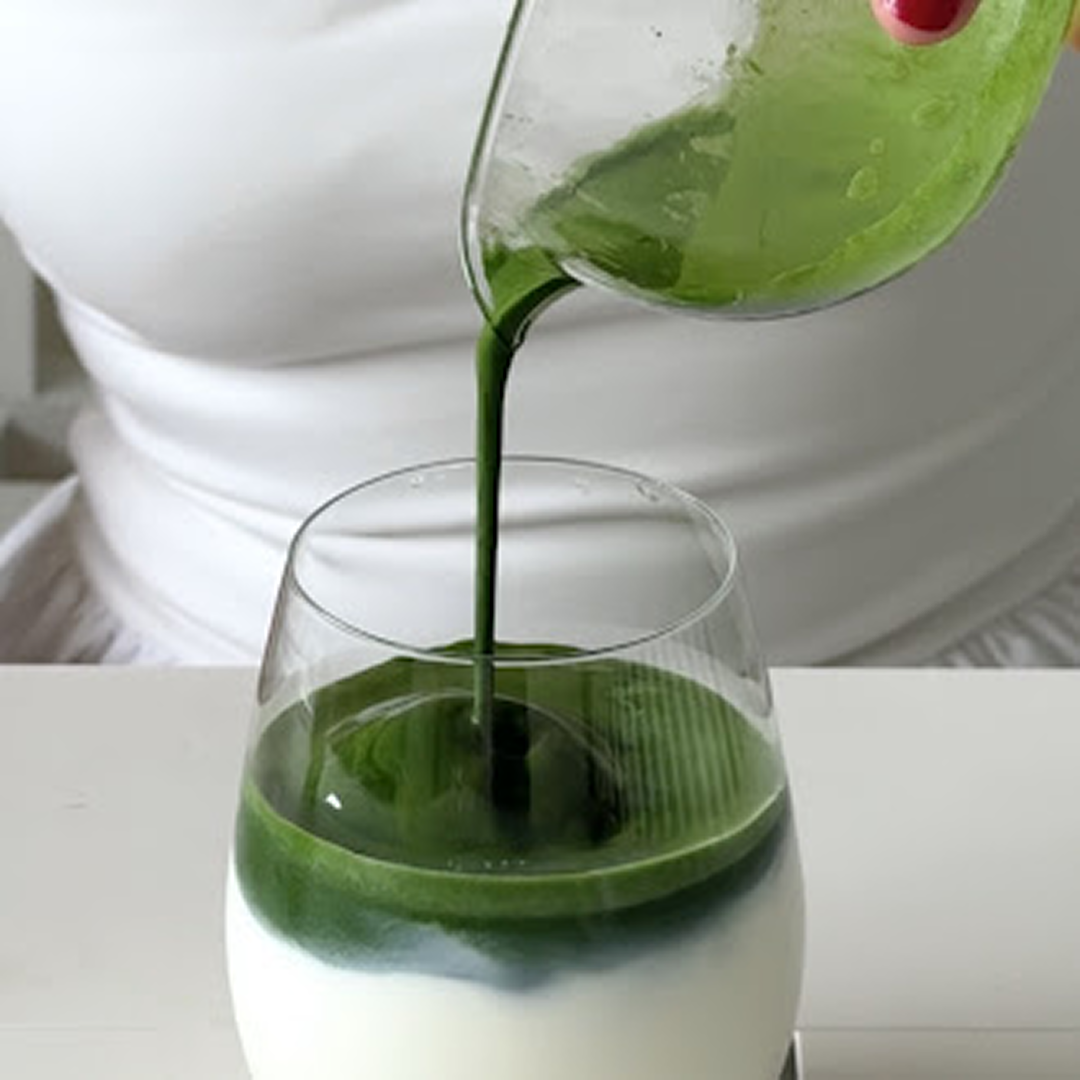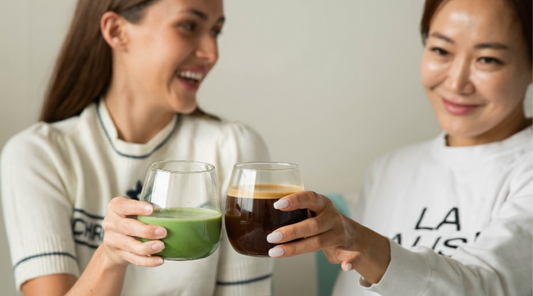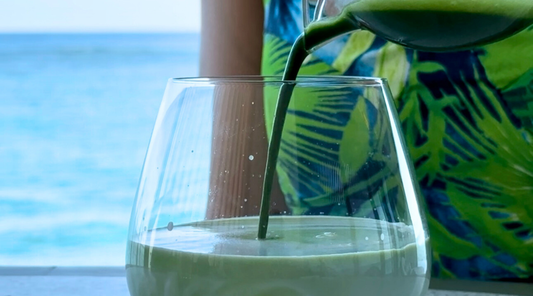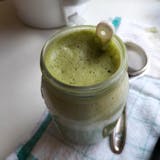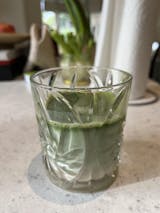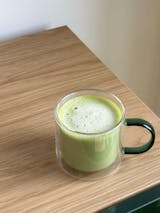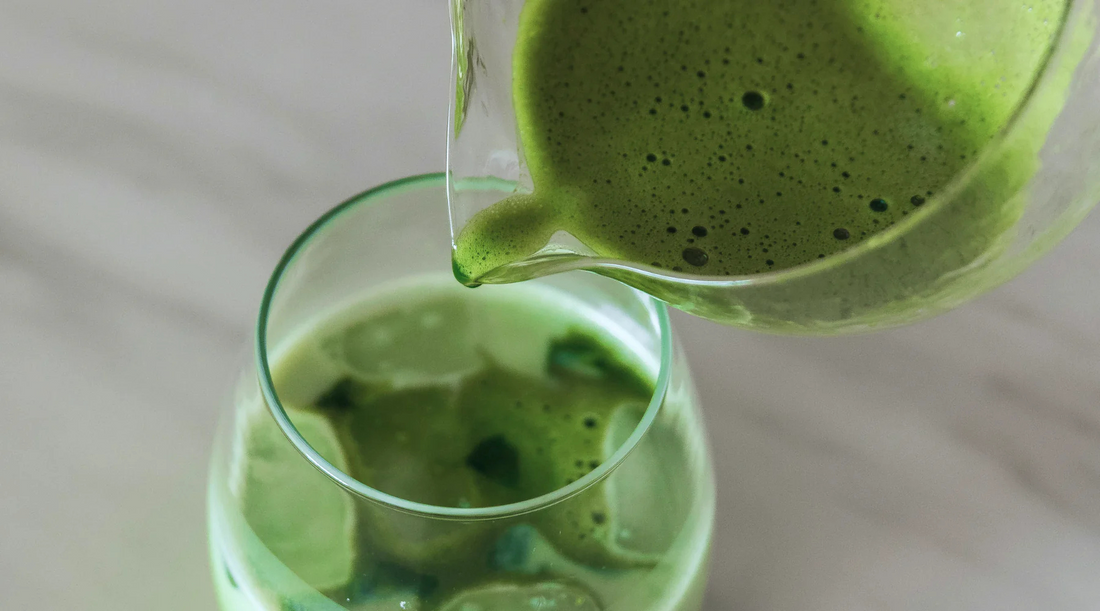
Umami in Matcha: The Secret to That Deep, Savoury Flavour
Share
Introduction: Why Does Matcha Taste So Unique?
Ever taken a sip of matcha and noticed something more than just grassiness? A deep, rich, almost brothy sensation that lingers on your tongue? That’s umami – the mysterious, satisfying fifth taste that makes high-quality matcha so special.
Beyond sweet, sour, salty, and bitter, umami is what gives matcha its signature depth. It’s why some matcha feels smooth and creamy, while lower-quality versions can taste harsh and astringent. But what exactly is umami, what does it taste like, and why does matcha have so much of it? Let’s dive in.
What Is Umami?
The word umami comes from the Japanese words "umai" (うまい), meaning "delicious," and "mi" (味), meaning "taste." It translates to "pleasant savoury taste" and was first identified by Japanese chemist Dr Kikunae Ikeda in 1908. While studying kombu (a type of seaweed used in Japanese cuisine), he discovered that its deep, lingering flavour came from glutamate, an amino acid responsible for umami.
Before this discovery, the four primary tastes – sweet, sour, salty, and bitter – were considered the only fundamental flavours. But Dr Ikeda realised umami didn’t fit into any of these categories, leading him to classify it as the fifth taste. To ensure its recognition in the scientific community, he isolated monosodium glutamate (MSG) from kombu and later developed a way to produce it commercially.
Although Dr Ikeda’s discovery was groundbreaking, umami has been an essential part of Japanese cuisine for centuries. Traditional dishes like dashi (a broth made from kombu and bonito flakes), miso soup, and fermented foods have long harnessed the power of umami to create depth and satisfaction in their flavours.
Today, umami is globally recognised as a key taste element in gastronomy, with matcha being one of its most refined expressions.
What Does Umami Taste Like?
Umami is often described as a rich, savoury, mouthwatering sensation – also tasting slightly brothy or meaty. This is the same taste you experience in aged cheese, soy sauce, mushrooms, or miso. Unlike sweetness or saltiness, which fade quickly, umami lingers on the tongue, enhancing complexity and depth. It plays a crucial role in balancing flavours and creating an overall more satisfying culinary experience.
Why Matcha Is Naturally Rich in Umami
So what makes matcha an umami powerhouse? It all comes down to how it’s grown and processed:
1. Shade-Grown Leaves = More Amino Acids
Premium matcha comes from shade-grown tea plants, meaning they are covered for the last few weeks before harvest. This forces the leaves to produce more chlorophyll and amino acids – especially L-theanine, a compound responsible for matcha’s signature umami taste.
2. High L-Theanine Levels
L-theanine is an amino acid that contributes to matcha’s rich, savoury depth while also promoting relaxation and focus. The best ceremonial-grade matcha is high in L-theanine and glutamates, creating that velvety umami experience.
3. Younger Leaves, Better Flavour
The first harvest of the season (called first flush) contains the most umami. Younger leaves are naturally sweeter and richer, while later harvests have more bitterness.
For more details on matcha harvests, check out our article "Matcha Harvests Explained: Differences Between 1st, 2nd, and 3rd Flush."

How to Recognise High-Umami Matcha
Not all matcha is created equal. If you want a matcha experience that’s smooth, creamy, and bursting with umami, look for:
- Bright, Vibrant Green Colour – Dull or yellowish matcha often means lower quality and less umami.
- Smooth, Rich, and Creamy Taste – No harsh bitterness, just a well-rounded, slightly brothy finish.
- Deep, Slightly Sweet Aroma – High-quality matcha should smell fresh, grassy, and slightly oceanic.
How to Bring Out More Umami in Your Matcha
Want to maximise the umami in your matcha? Here’s how:
Use the Right Water Temperature
To unlock umami, brew matcha with water between 70-80°C (158-176°F). Going too hot (above 80-85°C) can destroy delicate amino acids and make your matcha taste more bitter.
Whisk It Right
A proper chasen (bamboo whisk) helps aerate your matcha, creating a silky froth that enhances the umami texture.
Learn how to whisk matcha like a pro here.
Pair with the Right Foods
Try matcha with dark chocolate, miso, or roasted nuts – all umami-rich pairings that elevate its natural depth.
The Umami Effect: Why It Feels So Satisfying
Umami isn’t just about taste – it’s about how it makes you feel. Because of its L-theanine content, umami-rich matcha promotes calm focus, relaxation, and a sense of deep satisfaction. It’s the reason Zen monks have used matcha for centuries to enhance meditation and mindfulness.
Experience True Umami with Our Ceremonial Matcha
Ready to taste the real umami magic? Discover our ceremonial-grade matcha, carefully sourced for the richest, smoothest, most satisfying flavour.
Explore Our Matcha Selection →
Final Thoughts
Umami is what makes matcha an experience, not just a drink. It’s the reason high-quality matcha tastes velvety, deep, and complex, while lower grades fall flat. Now that you know how umami works, you’ll never look at matcha the same way again.
Next time you sip your matcha, pay attention to that lingering, mouthwatering depth – that’s umami in action.
